Development of Orthodontic Dental Materials
Research Overview
In this classroom, we carry out research on substances and materials with the objective of contributing to the development and improvement of orthodontic treatment. Processes aimed at actual utilization are the basis of this approach, through the design, production, and characteristics evaluation of functional materials. This is described in Japan as “monodzukuri (manufacturing).” Since the enactment of the “Basic Act on the Promotion of Core Manufacturing Technology” in 1999, this word, “monodzukuri” is often heard. This is not only due to the legal support provided to encourage the development of key industries within the manufacturing industry in Japan, but also because it echoes Japan’s view of history, and the mentality of the Japanese people. Of course, competition, in manufacturing, pursuit of new principles, and development of new material, is fierce between researchers and technicians of various research and technical fields in the world. Under these conditions, we, as dentists, have concentrated our research in areas where we understand and which we have recognized a need. We invite persons who have an interest in, and the motivation to contribute to, material science rooted in Japan’s unique culture and a better future.
Research theme
1. Development of clear orthodontic wire using composite materials
We have successfully developed 0.4-0.5mm clear wire, which can be used on existing orthodontic brackets, from composite materials. Reinforced construction is achieved using biocompatible glass on the polymethyl methacrylate (PMMA) which is characterized by high molding processability. Unfortunately however, when the wire is strengthened with glass fiber, it cannot sufficiently bend as needed for use in treatment. Therefore, we are working on developing high molecular materials and high molecular composite materials which can be used as high intensity fiber. In this case, improvement in strength is also required for the PMMA base material. We have already succeeded in reinforced construction based on the idea of using PMMA as a nano-composite material.
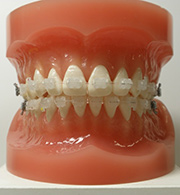
2. Development of orthodontic implants from biodegradable plastic nano-composite materials
In recent clinical practice in orthodontic dentistry, the importance of treatment using implants in orthodontic dentistry (official term in Japan: orthodontic anchor screw) has begun to gain recognition. All orthodontic anchor screws which have been approved based on the Pharmaceutical Affairs Law are made of titanium, and are removed when no longer needed for treatment. We are focusing on poly-L- lactic acid, a biodegradable plastic which dissolves within the body, in order to create a nano-composite material (photo below) for use as a lamellar silicate (figure above) in the development of an orthodontic anchor screw with sufficient strength, safety, and biodegradability. We have already successfully established the nano-composite technology, and are earnestly working on forming the screw shape.
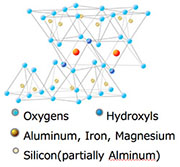
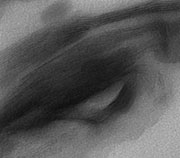
3. Development of orthodontic bonding material with fluorescent characteristics (visible only when you want to see it)
After removing an orthodontic bracket, any adhesive bond remaining on the tooth surface must also be removed. However, removing the clear bond without damaging the tooth is quite difficult. On the other hand, using colored adhesive bond that stands out is not feasible. Therefore, we have developed an adhesion bond which is usually clear but can be seen when scraping it off, employing the material characteristic called fluorescence. We used trivalent ions of europium which yield a bright red fluorescence under near-ultraviolet light. Since purple and red are most distant color region of the visible light spectrum, it is convenient for development, because color of the exposure light and the luminescent color do not overlap. Up to now, experiments have been carried out using two methods- one method that incorporates europium ions into crystals of zinc oxide and yttrium oxide in order to increase the intensity of fluorescence, and another method which uses europium complex. Good achievement has been obtained from both methods.
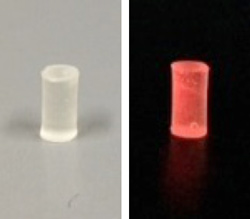
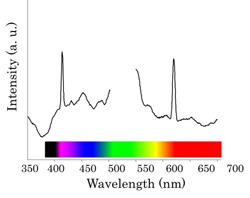
4. Research to be announced in the near future (presently confidential)
We have started some very promising research on bonding. Please be patient. We will soon be announcing some very interesting results in the near future.
